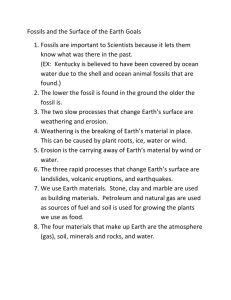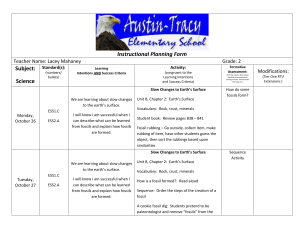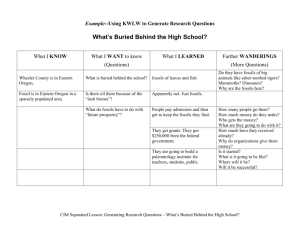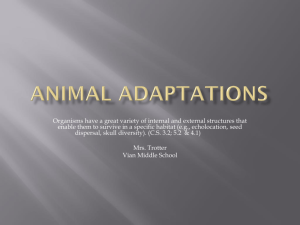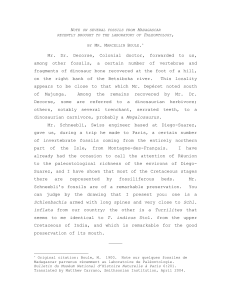Instructional Planning Form
advertisement
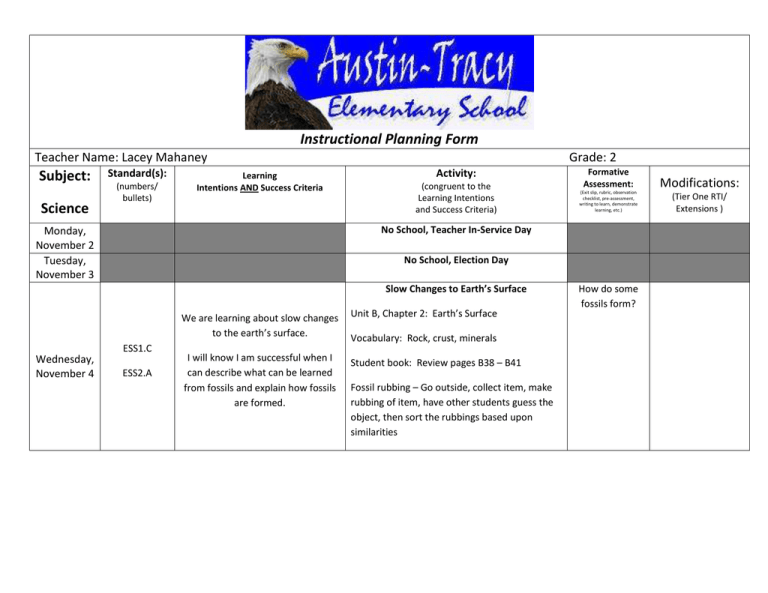
Instructional Planning Form Teacher Name: Lacey Mahaney Subject: Science Standard(s): (numbers/ bullets) Learning Intentions AND Success Criteria Grade: 2 Activity: (congruent to the Learning Intentions and Success Criteria) (Exit slip, rubric, observation checklist, pre-assessment, writing to learn, demonstrate learning, etc.) No School, Teacher In-Service Day Monday, November 2 Tuesday, November 3 No School, Election Day Slow Changes to Earth’s Surface ESS1.C Wednesday, November 4 Formative Assessment: ESS2.A We are learning about slow changes to the earth’s surface. Unit B, Chapter 2: Earth’s Surface I will know I am successful when I can describe what can be learned from fossils and explain how fossils are formed. Student book: Review pages B38 – B41 Vocabulary: Rock, crust, minerals Fossil rubbing – Go outside, collect item, make rubbing of item, have other students guess the object, then sort the rubbings based upon similarities How do some fossils form? Modifications: (Tier One RTI/ Extensions ) We are learning about slow changes to the earth’s surface. Thursday, November 5 ESS1.C ESS2.A I will know I am successful when I can describe how weathering changes the shape, size, and texture of rocks over time and compare weathering to erosion, describe what can be learned from fossils, and explain how fossils are formed. We are learning about slow changes to the earth’s surface. Friday, November 6 I will know I am successful when I can describe how weathering changes the shape, size, and texture of rocks over time and compare weathering to erosion, describe what can be learned from fossils, and explain how fossils are formed. Slow Changes to Earth’s Surface Chapter Review Unit B, Chapter 2: Earth’s Surface Chapter review: SMART board whole group review then independent chapter review Slow Changes to Earth’s Surface Unit B, Chapter 2: Earth’s Surface Summative assessment: Complete independently, check work as a group, and address any possible misconceptions Summative Assessment
